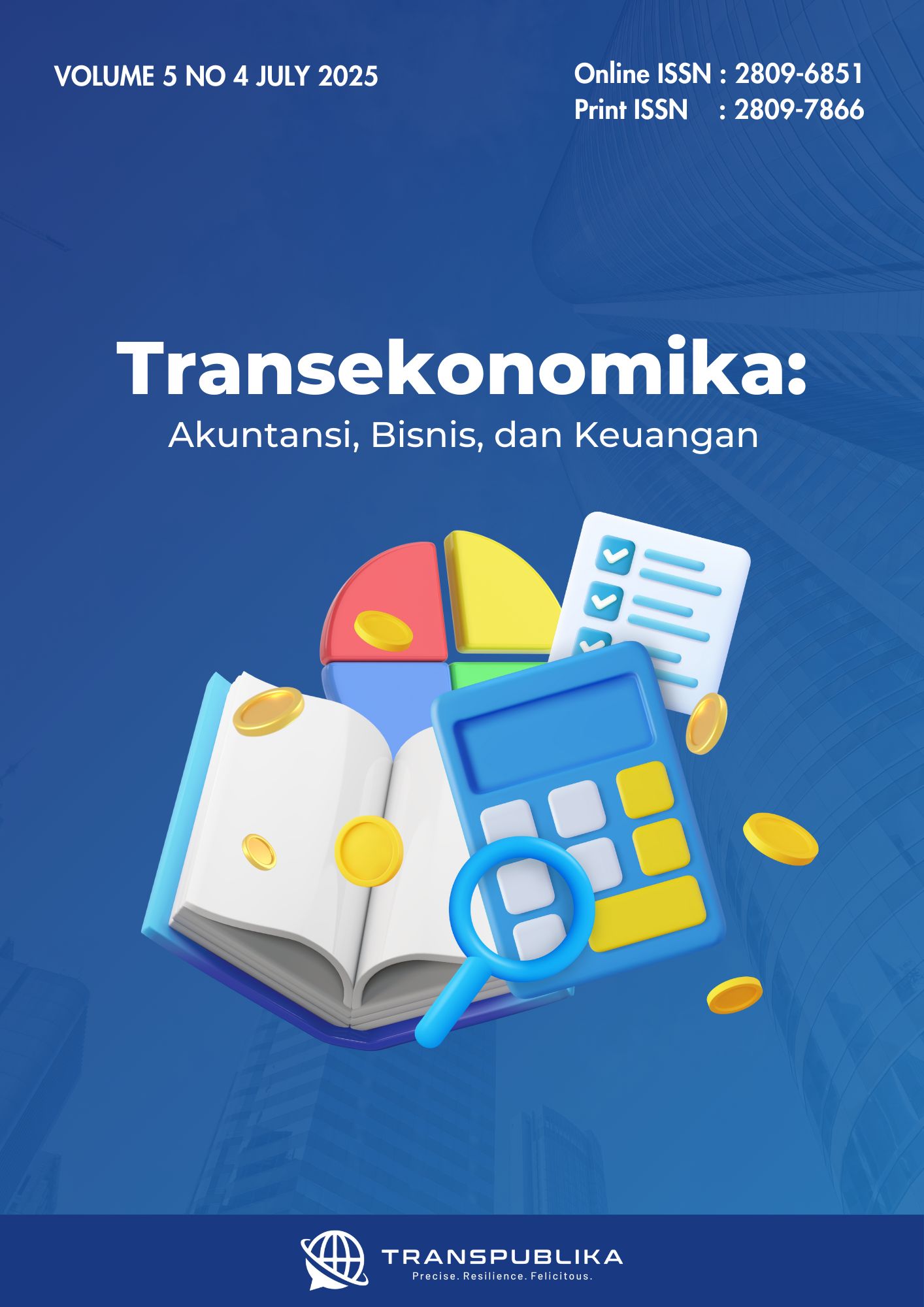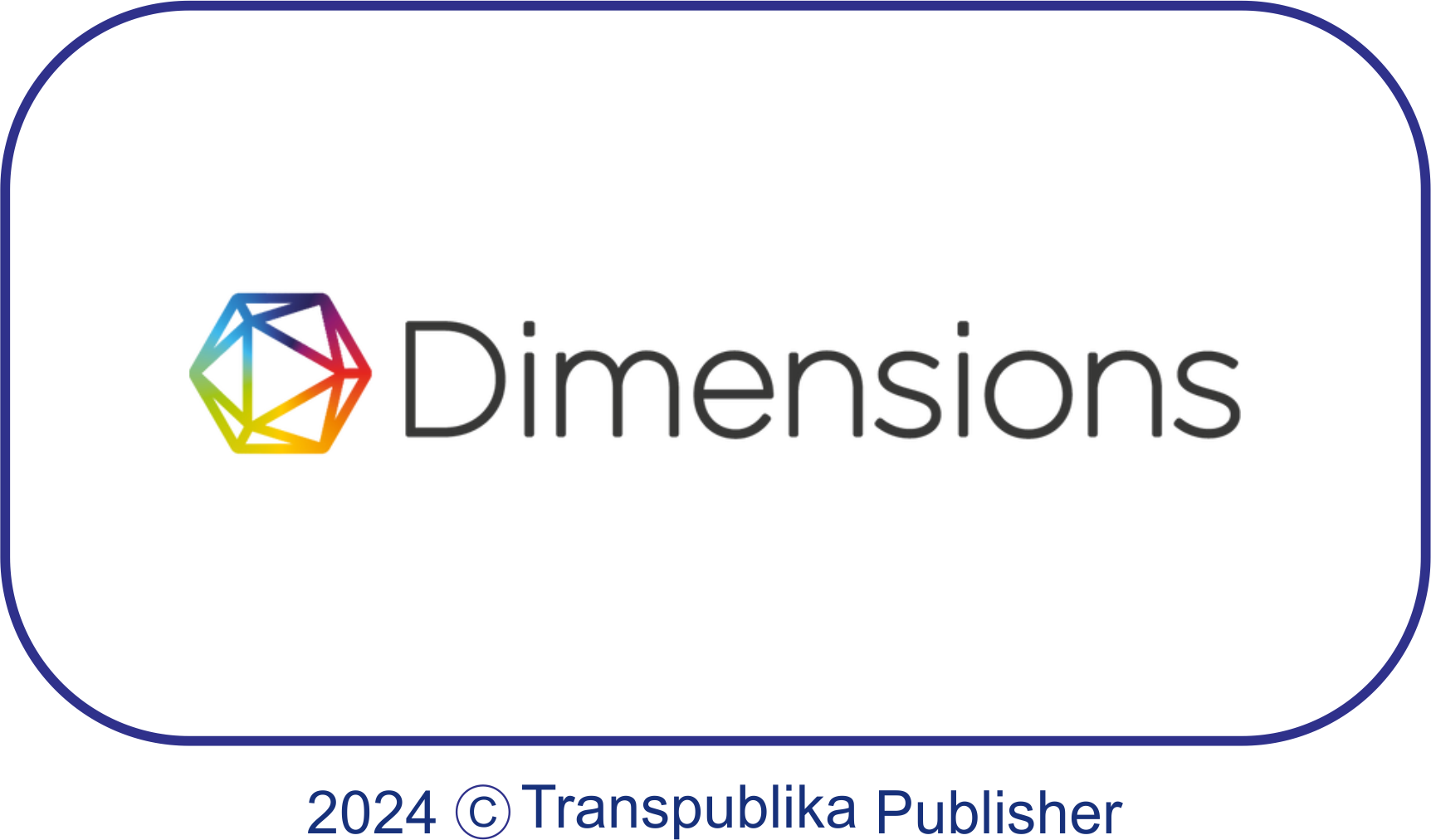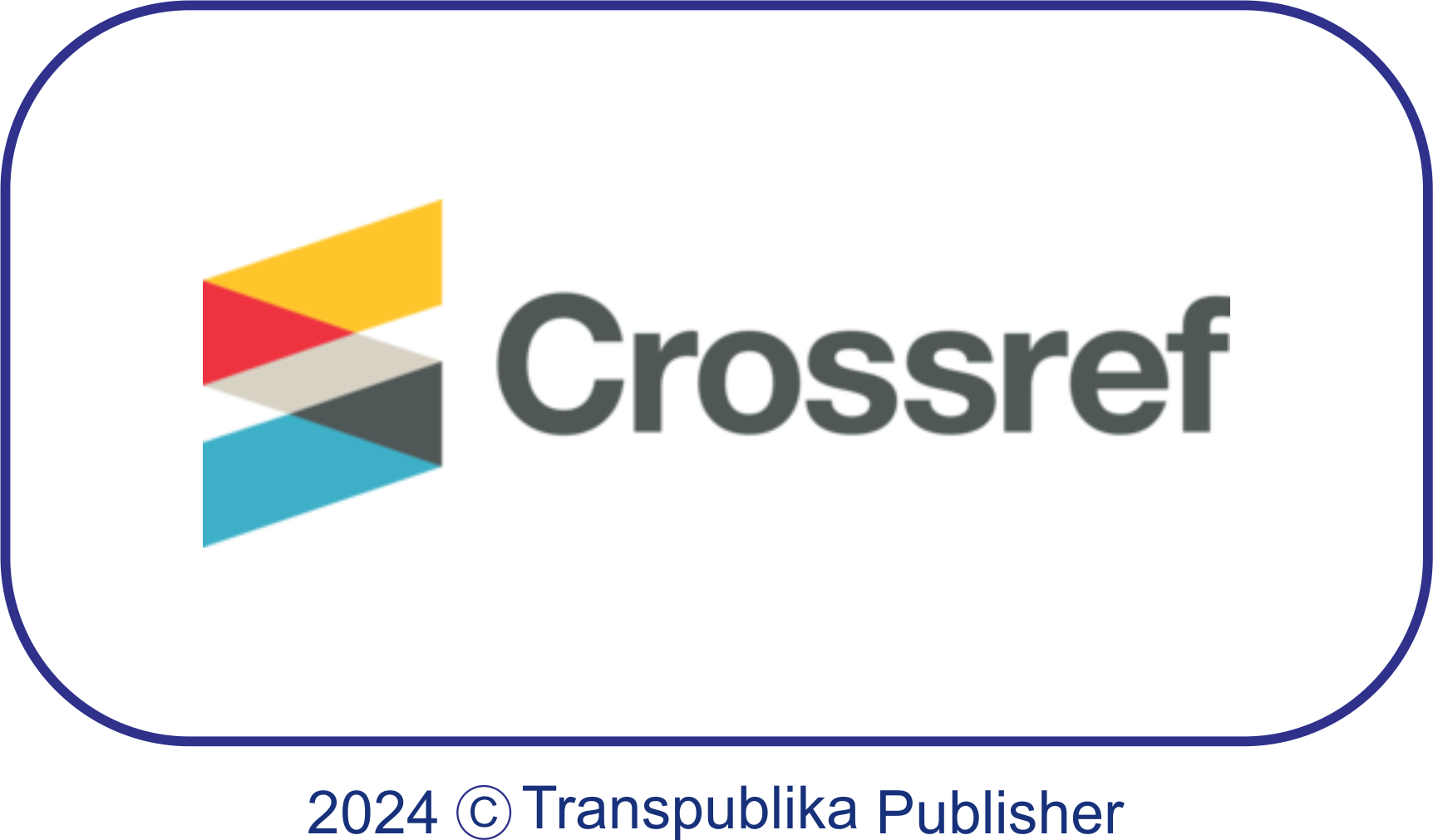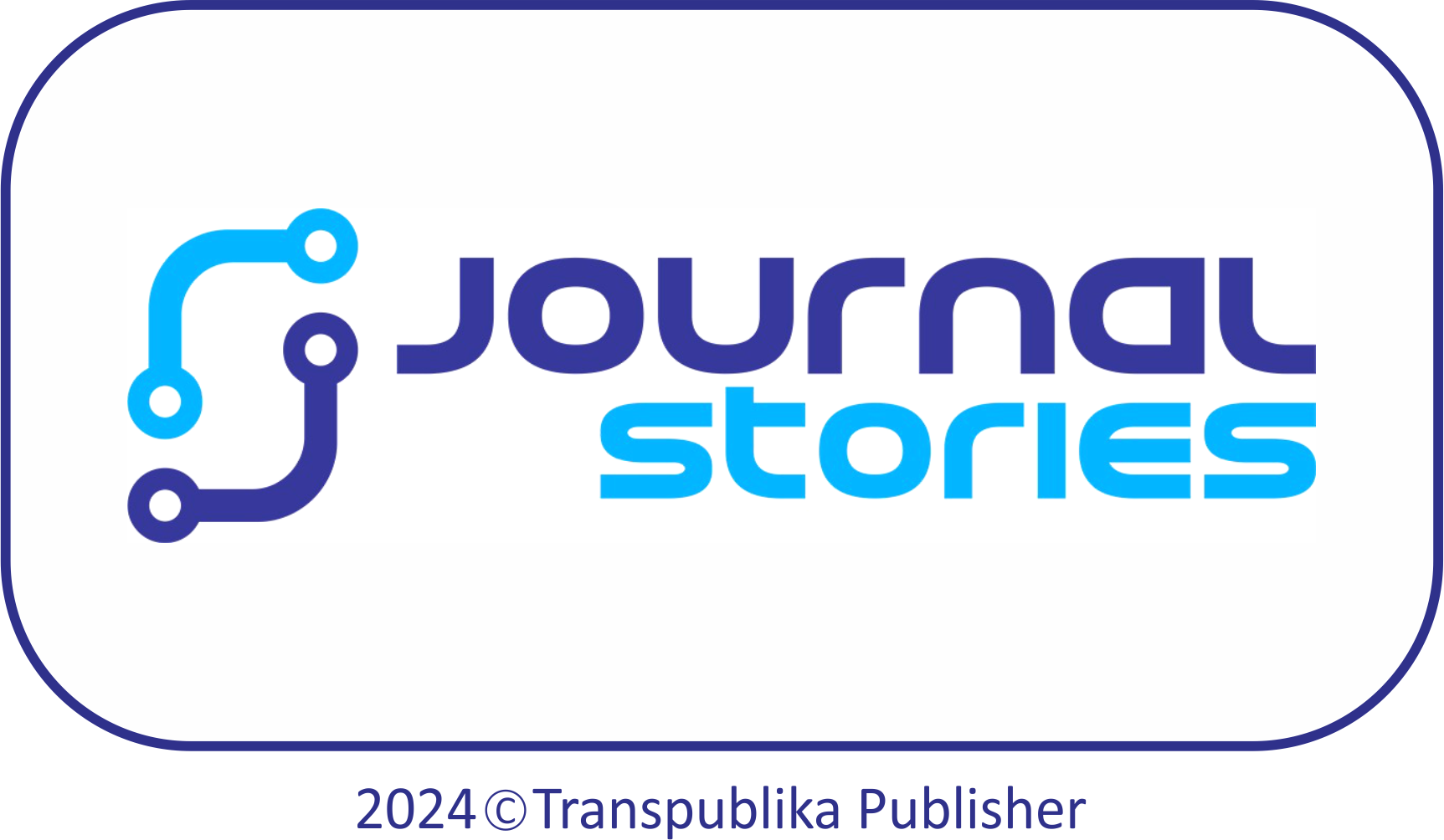Analysis of the Effect of Warehousing Management System and Employee Ability on Work Productivity through Lean Warehousing in the Warehouses of the National Disaster Management Agency (BNPB) and the Regional Disaster Management Agency (BPBD)
Abstract
Indonesia is located along the equator and at the convergence of three major tectonic plates, making it prone to natural disasters such as earthquakes, tsunamis, and landslides. BNPB and BPBD manage disaster logistics using technology-based warehouse management systems (WMS) to improve aid distribution efficiency. This study examines the combined impact of warehouse management systems and employee capabilities on work productivity using a Lean Warehousing approach, which has not been extensively explored in previous research. The study was conducted at BNPB Jatiasih warehouse and BPBD warehouses across Java Island using observations, interviews, and questionnaires distributed to 98 respondents. Data were analyzed with SPSS 24.00, employing descriptive statistics, multiple regression, F-tests, t-tests, and the coefficient of determination (R²). Most respondents were male (76.8%) with a bachelor’s degree (39.8%). Validity tests showed that variables including inventory management, picking, item placement, employee skills, and lean warehousing had valid correlations above 0.202. Descriptive analysis indicated that warehouse management at BNPB and BPBD is effective but needs improvements in IT utilization, picking efficiency, inventory recording, and employee skills. Statistical tests confirmed that all variables significantly influence lean warehousing and productivity at a 95% confidence level. The study contributes novel insights by demonstrating how technology and employee capability synergistically enhance lean warehousing performance in disaster logistics. Strategic recommendations include routine employee training, strengthened cooperation through coaching and briefings, and optimized budget use via internal audits and independent utilization of logistical assets.
Downloads
References
Acevedo-Aybar, C. (2024). Optimizing Warehouse Management in Footwear Commercial Companies: A Case Study on Lean-BPM. Ssrg International Journal of Mechanical Engineering, 11(1), 16–27. https://doi.org/10.14445/23488360/IJME-V11I1P102
Adriaensen, A. (2023). Systems-theoretic interdependence analysis in robot-assisted warehouse management. Safety Science, 168. https://doi.org/10.1016/j.ssci.2023.106294
Aguilar-Paz, A. (2023). A Proposed Model for Inventory Management to Minimize the Rate of Raw Materials Tied up of Textile Industry with Lean Engineering Tools. Ssrg International Journal of Mechanical Engineering, 10(8), 11–20. https://doi.org/10.14445/23488360/IJME-V10I8P102
Ambarwati, R. (2024). A multi-method study of risk assessment and human risk control for power plant business continuity in Indonesia. Results in Engineering, 21. https://doi.org/10.1016/j.rineng.2024.101863
Baby, B., Prasanth, N., & Jebadurai, D. S. (2018). Implementation of lean principles to improve the operations of a sales warehouse in the manufacturing industry. Industrial Engineering, 9(1), 46–54. https://doi.org/10.14716/ijtech.v9i1.1161
Baharmand, H. (2019). Bi-objective multi-layer location–allocation model for the immediate aftermath of sudden-onset disasters. Transportation Research Part E Logistics and Transportation Review, 127, 86–110. https://doi.org/10.1016/j.tre.2019.05.002
Balakrishnan, A. S. (2021). In-plant lean logistics management: case study on Chinese automotive practices. International Journal of Logistics Systems and Management, 40(4), 466–488. https://doi.org/10.1504/IJLSM.2021.120491
Bestari, B. P., & Fatma, E. (2020). Penerapan lean warehousing untuk meningkatkan kinerja aktivitas gudang pada perusahaan percetakan buku. Prosiding Seminar Nasional Manajemen Industri Dan Rantai Pasok, 1, 160–169.
Bougie, R., & Sekaran, U. (2016). Research methods for business: A skill building approach. John Wiley & Sons.
Bowersox, D. J. (2006). Manajemen Logistik. Bumi Aksara.
Calzavara, M. (2019). A model for rest allowance estimation to improve tasks assignment to operators. International Journal of Production Research, 57(3), 948–962. https://doi.org/10.1080/00207543.2018.1497816
Chen, T. (2019). Risk propagation model and its simulation of emergency logistics network based on material reliability. International Journal of Environmental Research and Public Health, 16(23). https://doi.org/10.3390/ijerph16234677
Coyle, D., Hood, P., & Marsh, D. (2010). Content and language integrated learning (Vol. 221). Cambridge university press Cambridge.
Delshad, M. M. (2024). Efficient Humanitarian Logistics: Multi-Commodity Location–Inventory Model Incorporating Demand Probability and Consumption Coefficients. Logistics, 8(1). https://doi.org/10.3390/logistics8010009
Dinis-Carvalho, J. (2023). Improving the Performance of a SME in the Cutlery Sector Using Lean Thinking and Digital Transformation. Sustainability Switzerland, 15(10). https://doi.org/10.3390/su15108302
Ellison, P. B. (2020). Health economic analysis of pharmaceutical inventory levels. Journal of Humanitarian Logistics and Supply Chain Management, 10(4), 603–628. https://doi.org/10.1108/JHLSCM-01-2020-0001
Emmett, S. (2005). Excellence in warehouse management: how to minimise costs and maximise value. John Wiley & Sons.
Fares, N. (2025). Lean implementation case study for manual order picking and packing in warehousing operations. International Journal of Lean Six Sigma. https://doi.org/10.1108/IJLSS-05-2024-0097
Fazli, L. (2024). A location-inventory-distribution model under gradual injection of pre-disaster budgets with application in disaster relief logistics: a case study. Soft Computing, 28(3), 2125–2159. https://doi.org/10.1007/s00500-023-09184-8
Hair Jr, J. F., Sarstedt, M., Hopkins, L., & Kuppelwieser, V. G. (2019). Partial least squares structural equation modeling (PLS-SEM). In European business review. Emerald Group Publishing Limited.
Hanafiah, R. M. (2022). An Innovative Risk Matrix Model for Warehousing Productivity Performance. Sustainability Switzerland, 14(7). https://doi.org/10.3390/su14074060
Hehanussa, P. E. (2012). Perancangan jaringan logistik untuk menentukan lokasi dan jumlah gudang penyalur berbasis peta risiko bencana di Kabupaten Sleman, Daerah Istimewa Yogyakarta. UAJY.
Heizer, J., Render, B., & Munson, C. L. (2019). Operations Management: Sustainability and Supply Chain Management. Pearson.
Herdianzah, Y., Arfandi Ahmad, Anis Saleh, Anugerah Syukur, Rahmaniah, & A Dwi Wahyuni P. (2022). Pengaruh Penerapan Warehouse Management System Terhadap Kinerja Gudang Pada PTP Nusantara XIV Persero. Metode : Jurnal Teknik Industri, 8(2), 91–101. https://doi.org/10.33506/mt.v8i2.1950
Jaehrling, K. (2019). Amazon is not a pioneer of ‚digital taylorism‘. Digging into the deep structures of the current workplace transformation and the scope for collective bargaining in Germany. Industrielle Beziehungen, 26(2), 169–188. https://doi.org/10.3224/indbez.v26i2.04
Jarašūnienė, A. (2023). Research on Impact of IoT on Warehouse Management. Sensors, 23(4). https://doi.org/10.3390/s23042213
Li, M. (2025). An order postponement strategy for multi-stage production-logistics synchronization towards zero-warehousing smart manufacturing. Journal of Manufacturing Systems, 82, 389–404. https://doi.org/10.1016/j.jmsy.2025.06.024
Martono, R. V. (2018). Manajemen Logistik. Gramedia Pustaka Utama.
Michlowicz, E. (2024). Methodology Of Evaluating Finished Goods Warehouse Performance Through Lean Methods. Archives of Transport, 70(2), 43–64. https://doi.org/10.61089/aot2024.s9sq9q75
Mohamud, I. H., Kafi, M. A., Shahron, S. A., Zainuddin, N., & Musa, S. (2023). The Role of Warehouse Layout and Operations in Warehouse Efficiency: A Literature Review. Journal Européen Des Systèmes Automatisés, 56(1). https://doi.org/10.18280/jesa.560109
Naus, A., de Haan, J. A. C., & Overboom, M. A. (2011). Lean logistics service providers: Option or utopia? Experiences from the Netherlands. Proceedings of the 5th International Congres on Logistics and SCM Systems (ICLS 2009): Overcoming Economic Crisis through Collaborative Global Logistics and Supply Chains, 243–250.
Prasidi, A., & Lesmini, L. (2019). Ketepatan Waktu Pendistribusian Barang Pada Warehouse Management System di PT. CEVA Logistics Tahun 2019. Jurnal Logistik Indonesia, 3(2), 68–78. https://doi.org/10.31334/logistik.v3i2.620
Putra, S. A., & Abdul, F. W. (2021). Model Penerapan Metode Lean Terhadap Produktivitas Pada Proses Pergudangan Tahun 2020 (Studi Kasus di PT. Lazada Gudang Sunter). Jurnal Manajemen Logistik, 1(1), 116–125.
Rachmawati, Y. P. (2025). Optimalisasi Tata Letak Gudang Dengan Penerapan Metode Lean Warehouse Pada RSUD Ibnu Sina Gresik. Journal of Economic, Bussines and Accounting (COSTING), 7(6), 10676–10686. https://doi.org/10.31539/costing.v8i1.13923
Rahman, M. A. (2024). The Lean Advantage: Transforming E-Commerce Warehouse Operations for Competitive Success. Logistics, 8(4). https://doi.org/10.3390/logistics8040129
Reksohadiprodjo, S. (2016). Manajemen Produksi. BPFE.
Rimadeni, Y. (2024). Improving Medical Logistics Resilience in Earthquake Disasters: A Qualitative Case Study from Indonesia. Journal of Logistics Informatics and Service Science, 11(10), 173–198. https://doi.org/10.33168/JLISS.2024.1010
Ristono, A. (2019). Manajemen persediaan. Graha Ilmu.
Russell, R. S., & Taylor, B. W. (2019). Operations and Supply Chain Management. Wiley. https://books.google.co.id/books?id=xSz7DwAAQBAJ
Safapour, E. (2022). Key components of successful post–hurricane reconstruction of transportation infrastructures. Built Environment Project and Asset Management, 12(5), 775–791. https://doi.org/10.1108/BEPAM-05-2021-0071
Sari, D. P. P., & Liliana, L. (2022). Pengaruh Lingkungan Kerja, Motivasi, dan Kepuasan Kerja Terhadap Produktivitas Karyawan CV. Angkutan Terang Mandiri (ATM) Palembang. Jurnal Kompetitif, 11(1). https://doi.org/10.52333/kompetitif.v11i1.897
Sedarmayanti. (2018). Manajemen sumber daya manusia; reformasi birokrasi dan manajemen pegawai negeri sipil. Reflika Aditama.
Shah, B. (2023). What should be lean buffer threshold for the forward-reserve warehouse? International Journal of Productivity and Performance Management, 72(2), 361–387. https://doi.org/10.1108/IJPPM-02-2021-0075
Sihaloho, T. Y., & Hidayati, N. (2023). Pengaruh penerapan warehousing management system terhadap kinerja operasional pergudangan perusahaan logistik xyz. MANAJEMEN IKM: Jurnal Manajemen Pengembangan Industri Kecil Menengah, 18(2), 101–112. https://doi.org/10.29244/mikm.18.2.101-112
Soekidjo, N. (2017). Pengembangan sumber daya manusia. In Jakarta: Rineka Cipta.
Sutrisno, E. (2013). Manajemen Sumber Daya Manusia. Jakarta: Penerbit Kencana Prenada Media Group.
Theuer, H. (2020). Marketsurvey – warehouse management systems. Fabriksoftware, 25(3), 56–64.
Wairooy, M. A. (2019). Pengaruh Ukuran Perusahaan Dan Risiko Bisnis Terhadap Struktur Modal Pada Perusahaan Industri Otomotif Yang Terdaftar Di Bursa Efek Indonesia. Jurnal Ekonomi Balance Fakultas Ekonomi Dan Bisnis, 15(2), 165–187.
Winardi. (2017). Perancangan dan Pengawasan dalam Bidang Manajemen. Jakarta: Mandar Maju.
Yoshitake, H. (2019). New Automated Guided Vehicle System Using Real-Time Holonic Scheduling for Warehouse Picking. IEEE Robotics and Automation Letters, 4(2), 1045–1052. https://doi.org/10.1109/LRA.2019.2894001
Zadgaonkar, H. (2021). Locating Objects in Warehouses Using BLE Beacons Machine Learning. IEEE Access, 9, 153116–153125. https://doi.org/10.1109/ACCESS.2021.3127908
Copyright (c) 2025 Muhaiminul Ghaddafi, Siti Fatimah, Atong Soekirman, Lira Agusinta, Dian Artanti Arubusman

This work is licensed under a Creative Commons Attribution 4.0 International License.








.png)







.png)


.png)

.png)















